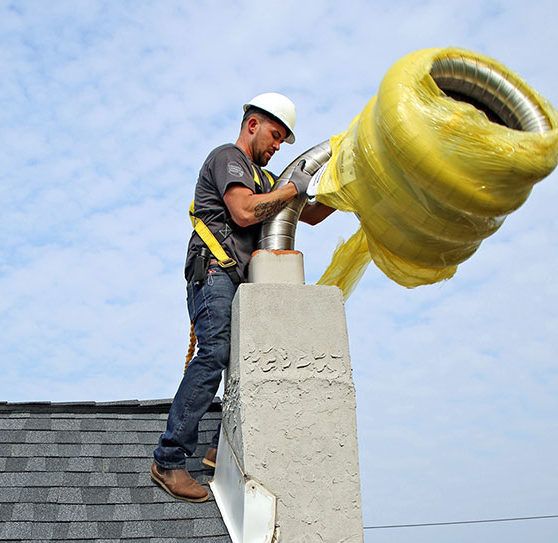5 Questions to Ask When Getting A New Chimney Liner
 You just had an annual chimney inspection, and your chimney sweep is recommending a new liner for the flue. Like other chimney components, the flue liner will eventually reach its end of life and require replacement. Here are five questions every homeowner should ask when getting a new chimney liner:
You just had an annual chimney inspection, and your chimney sweep is recommending a new liner for the flue. Like other chimney components, the flue liner will eventually reach its end of life and require replacement. Here are five questions every homeowner should ask when getting a new chimney liner:
Why Do I Need a Chimney Liner?
A chimney liner is an essential safety component. As you can imagine, the heat inside a burning fireplace can be intense, reaching up to 1,100°F. The liner wraps around the flue inside the chimney, keeping the flames away from the combustible elements of a home’s structure. It also insulates the flue increasing the heating efficiency of your fireplace. Your chimney professional will recommend a new chimney liner when the existing liner is damaged beyond repair and is no longer effective in protecting the masonry from a burning fire in the fireplace. If your chimney is unlined, a chimney liner will be necessary to reduce the risk of a chimney fire and meet current building and fire codes.
How Much Will It Cost?
The cost of a chimney liner varies. It will depend on the type of material and the size and shape of your flue, but the cost generally ranges between $2,500 and $5,000. When considering its price, also consider its durability, maintenance, and repairs. For example, clay liners are generally the least expensive but require more maintenance and repairs than other types.
What Types of Liners are Available?
There are generally three types of flue liners:
Clay tile: Terra cotta or clay tile liners are the most common found in residential chimneys. They are relatively inexpensive and widely available. But that’s where its advantages end. The corrosive gases and any condensation or moisture in the stack can soften it, causing the tiles to chip and crack. Also, the intense heat will eventually damage the clay tiles. As a result, they need frequent maintenance and repairs.
Stainless Steel: UL-listed stainless-steel chimney liners are becoming a popular flue liner replacement. It is cut to the size of your flue and inserted directly inside the chimney. They are also lightweight, instrumental in heat distribution, and are water-resistant. They are recommended for both wood-burning and gas fireplaces.
Cement: Cast-in-place cement liners are poured directly into the flue and can be installed in any flue size or shape. It can also increase the structural integrity of the chimney, especially in older homes. But like clay tiles, cement is porous, and it is also prone to cracking and damage from the fire and gases. However, its high installation cost makes it a costly flue liner.
 Do Chimney Liners Need to Be Insulated?
Do Chimney Liners Need to Be Insulated?
Stainless steel chimney liners are very effective in absorbing heat. As a result, it is recommended that metal liners be insulated to protect the masonry further. Insulating stainless steel liners will increase safety and performance.
How Long Will It Last?
The life expectancy of your flue liner will depend on the quality and materials, but they generally will provide approximately 15 to 20 years of performance, on average, before requiring replacement. Higher quality liners will perform considerably longer, while low-quality liners will need more frequent replacement. Annual chimney inspections and professional cleanings can prolong the lifespan of your flue liner.


